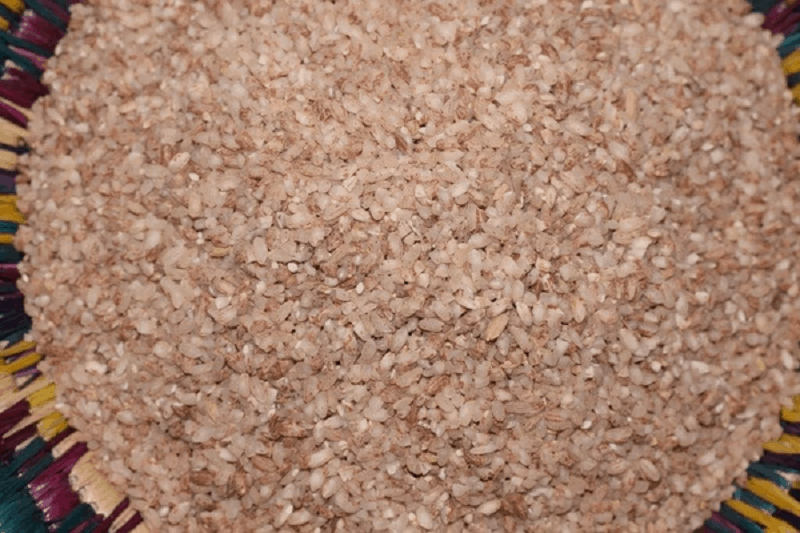Why Holistic Nutritionists are recommending the Traditional Red Rice

Why Holistic Nutritionists are Recommending the Traditional Himalayan Red Rice
Add Color and Flavor to your Meals with the Traditional Himalayan Red Rice
Traditional Himalayan Red Rice –Goodness of nature from the foothills of the Himalayas
Traditional Himalayan Red Rice
The world is a colorful place. Regardless of whether it is clothes or cuisine, we are naturally drawn to color. Our food is tastier when it has some color in it. Well, it might sound cliché, but we do eat with our eyes first. While the color and aroma are on one-end of the gastronomical spectrum, making healthy and nutritious food choices is on the other. And, we are trying to make these two ends meet.
Healthy food doesn’t have to be dull, colorless, or boring. There is a simple way to make healthy foods taste good and look appealing. The traditional Himalayan Red Rice ticks all the boxes in the perfect food category. It has a great aroma (some say it smells like butter popcorn!), mildly nutty taste, and attractive red color. And its rich and earthy flavor coupled with its intense red hue pairs well with any selection of organic vegetables. Cook it with any of your favorite vegetables, and its assertive flavour will make any dish enjoyable.
What Makes Himalayan Red Rice A Preferred Health Choice
The Himalayan red rice is a long-grained traditional rice variety that is usually eaten unpolished and unshelled. According to Holistic Nutritionist Luke Coutinho, Himalayan red rice packs higher nutritional value and flavor than some of the other rice varieties. Lets’ see why the Himalayan red rice is a nutrition powerhouse:
- This rice is not polished or processed, helping it retain the whole-grain properties of rice.
- It is rich in fiber, Vitamin B, Iron, Zinc, Magnesium, and other vital nutrients.
- It is rich in antioxidants, meaning it will keep free radicals from damaging your body.
- Since it is fully or partially covered with husk, red rice is a good source of fiber.
You might wonder, what’s in color? In the case of Himalayan red rice- probably, everything. The rice gets its beautiful red color because of the presence of anthocyanin – an antioxidant – that you can see in reddish or purple-colored fruits and vegetables.
How to Select the Right Red Rice?
The market is full of rice varieties, and so picking the proper red rice is not easy. However, with help from Luke Coutinho, you can’t go wrong in your choice.
Since the color of the rice is maintained by its anthocyanin levels, it is better to choose unpolished rice. This colorful variety comes with the germ and bran intact making this it much more nutritious than the white ones. Pick the rice that says it is ‘completely whole-grain. Look for rice with a deep red color as the color of the rice is regulated by its antioxidant levels. Finally, pick the organic variety of red rice.
What Makes the Himalayan Red Rice Different from the Other Rice Varieties?
Lets’ now see how the Himalayan rice compares to the other varieties of rice – such as white rice and brown rice.
White rice is highly-polished rice. Its outer layer – bran, husk, and germ – are completely removed during processing. Most of the nutrients of rice are present in its outer layer. Therefore, it has way fewer minerals and vitamins when compared to other rice types. It packs high carbohydrate content and also has a high glycemic index.
Brown rice retains its bran and germ, as only the husk is removed. So, brown rice contains some amount of nutrients. Studies have indicated that eating more brown rice and iron-rich foods together can hamper the absorption of calcium and iron.
What are the Benefits of Red Rice?
The sudden surge in the popularity of the Himalayan red rice has set the focus on its many health benefits. One of the most popular lifestyle coaches, Luke Coutinho, recommends red rice as a great weight loss partner. In addition to helping you shed those pesky kilos, you get numerous benefits from eating this colorful rice.
Develops Immunity:
Thanks to its high antioxidant levels, this rice helps in preventing frequent illnesses. The presence of magnesium, selenium, and iron makes it all the more helpful in reducing or stopping tumors from growing or spreading. It helps build a robust immunity and core strength.
Helps in Digestion
This fiber-rich rice variety helps in reducing indigestion and eases bowel movements.
Better Diabetic Control
Unlike polished white rice, red rice slowly releases sugars into the bloodstream. This low glycemic index (releases glucose into the blood slowly and steadily) helps regulate the body’s insulin levels. In addition to this, there are other nutrients in red rice, which help keep sugar levels well-balanced.
Improves Heart Health
Controlling diabetes and cholesterol has a substantial positive impact on the heart. Whole grains, such as red rice, are known to reduce plaque formation in the arteries. When plaque forms, arteries tend to close up, increasing the risk of cardiovascular conditions.
Improves Bone Strength
As it is rich in magnesium and calcium, Himalayan red rice is the perfect bone-strengthening food. It can fight arthritis and osteoporosis, and other bone-related degenerative diseases.
Controls Blood Pressure
Red rice has higher magnesium levels than polished white rice—this mineral aids in regulating blood pressure and maintaining the body’s sodium balance.
Increases Metabolism
A perfect snack to help you healthily control your hunger pangs, Himalayan red rice is the right weight loss partner. Manganese improves metabolism, and the fiber lets your body flush out all the toxins. Since the red rice has its fiber, bran, and germ intact, it gives you a satiated feeling.
Reduces Allergy
The antioxidant present in red rice is known to reduce allergy episodes, inflammation and prevents asthma attacks.
Wrapping Up:
The traditional and pure Himalayan red rice is one of the richest, most aromatic rice varieties. It comes to your dining table from the Himalayas’ foothills, and it brings along the goodness and flavor of that region.
